
Plan your visit
Around the web
Contact
Email sign up
Never miss a moment. Stories, news and experiences celebrating Australia's audiovisual culture direct to your inbox.
Donate
Support us to grow, preserve and share our collection of more than 100 years of film, sound, broadcast and games by making a financial donation. If you’d like to donate an item to the collection, you can do so via our collection offer form.
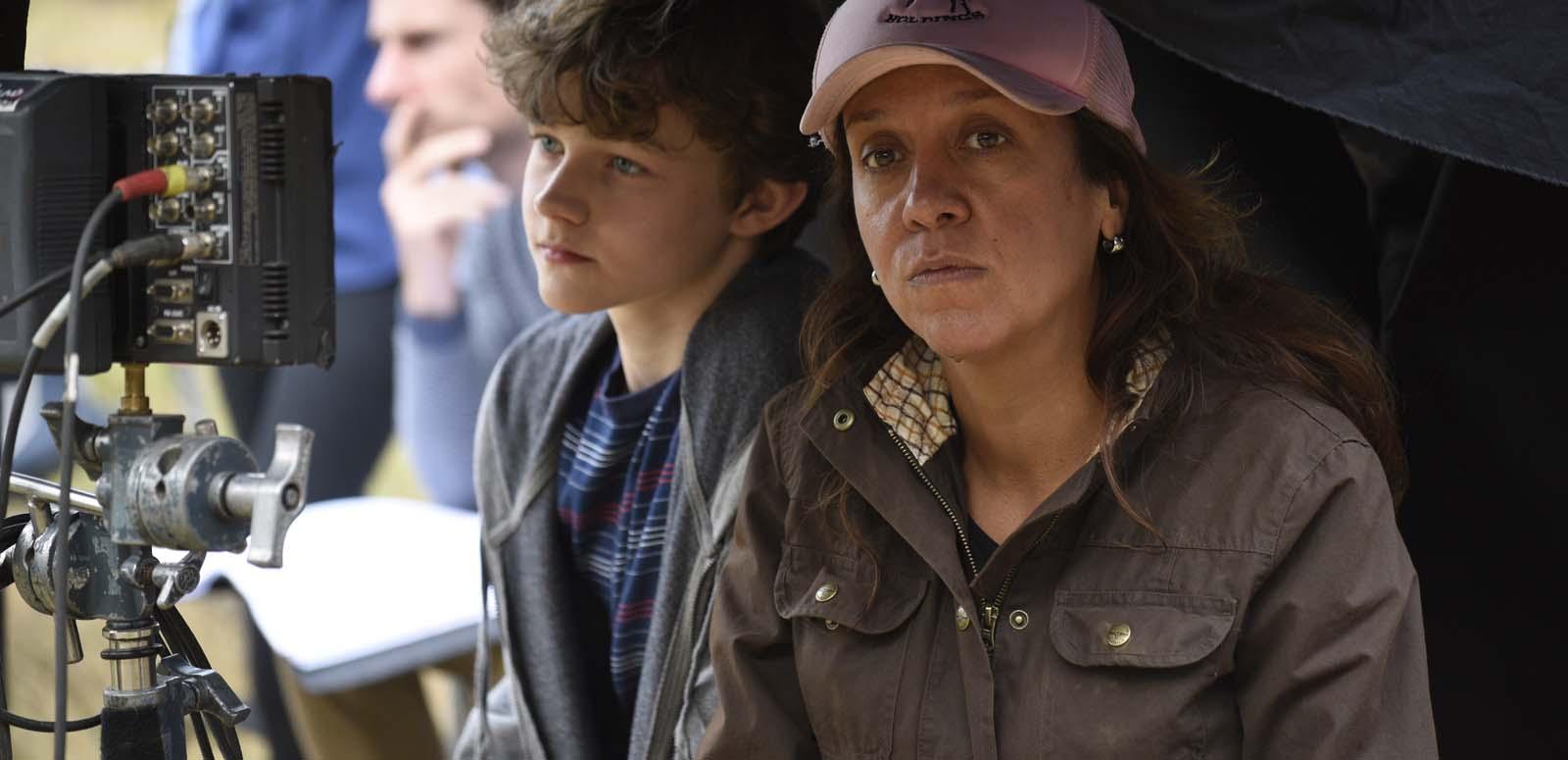
First Nations Portraits
Portraits of Prominent First Nations Australians
In these portraits, prominent First Nations Australians talk about their lives.
Interview subjects include filmmakers David Gulpilil, Rachel Perkins and Wayne Blair.
This collection also includes profiles of sporting stars like Mark Ella, Nova Peris and Anthony Mundine, and artists Albert Namatjira, Mervyn Bishop and Tracey Moffatt.
You can also watch Australian Biography interviews with Charles Perkins, Faith Bandler, Lowitja O'Donoghue and more.
WARNING: this collection contain names, images or voices of deceased Aboriginal and Torres Strait Islander people.
Main image: Director Rachel Perkins on the set of Jasper Jones (2017) with actor Levi Miller.
Rachel works from the Blackfella Films office on Sydney Harbour in Gadigal country. She is an Arrernte woman from Central Australia. This interview took place in 2009.
Rachel came to filmmaking from Canberra via Alice Springs, and is part of a large family of filmmakers that still work together.
They’ve had a lot of fun over the years – burning down a house in Radiance (1998), making musicals One Night the Moon (2001) and Bran Nue Dae (2009), and covering 200 years of Australia’s Indigenous history in First Australians (2008).
Rachel balances her creative film work with serving on many boards that govern filmmaking and screen culture.
This excerpt from a longer documentary shows a young Evonne Goolagong talking about her start in tennis in the small town of Barellan, New South Wales. Evonne is a Wiradjuri woman and she talks about how the media in Australia and overseas has referred to her Aboriginality.
In 1971, Goolagong won both the French Open and Wimbledon. Having defeated Billie Jean King in straight sets in the semi-finals she went on to take out the championship against fellow Australian Margaret Court in the final. She is seen here receiving the trophy from Princess Alexandra.
During her career, Goolagong (later Goolagong-Cawley) won Wimbledon twice, the Australian Open four times, the French Open once and was runner-up for four consecutive years at the US Open. She won seven Grand Slam doubles titles and was ranked world No. 1 in 1976.
In 1980 she became the first mother to win Wimbledon since Dorothy Lambert Chambers in 1914.
Archie Roach and Ruby Hunter talk about their experiences as members of the Stolen Generations. A Gunditjmara and Bundjalung man, Archie was forcibly separated from his family, who were living at the Framlingham Mission in Victoria, when he was two years old. Ruby was stolen from her family in South Australia when she was eight years old.
The clip also features their performance of 'Took the Children Away' from Murundak - Songs of Freedom, a documentary featuring some of Australia's best known Aboriginal and Torres Strait Islander musicians, released in 2011. The word 'Murundak' means 'alive' in Woiwurrung language spoken by the Kulin people around the Yarra in Victoria.
Anyone who enjoys the art of songwriting would appreciate this segment giving the background to one of the most important songs ever recorded in Australia. The cross-cutting between the live performance of 'Took the Children Away' and the backstory provided by Archie and Ruby is done seamlessly. It enriches both the song and interview.
Uncle Banjo Clarke asked Archie to write the song and provided him with his recollections of when the children were taken, which Archie incorporated in the lyrics.
Archie says in his autobiography Tell Me Why (2019) '...it's my healing song. Through songs, I have been able to deal with the pain and trauma in a more positive way. Every time I sing it, I let a little bit of the hurt and the trauma go.'
Notes by Beth Taylor and Adam Blackshaw
In this excerpt from an unidentified episode of ICAM (Indigenous Cultural Affairs Magazine) in 2000, Ruby Hunter talks about the dynamic between her and partner Archie Roach.
It's a delightful vignette; the style of interview is intimate and unaffected, inviting us into Ruby's brief and loving portrait of Archie. It's almost as if she is holding our trust and telling us a secret. The clip beautifully captures her warm, cheeky and authentic personality.
Ruby's words beautifully capture the mutual respect and love they have for each other. She says:
'He’s my silent hero and I’m his rowdy troublemaker. We both appreciate each other’s humour, strength and love. And yet … life is not full of roses but we stick it out because we’ve got something we’ve never had – a good family, good life.'
ICAM was hosted by Karla Grant and aired on SBS from 1995 until 2002. The Aboriginal and Torres Strait Islander current affairs program is now called Living Black.
Notes by Beth Taylor and Adam Blackshaw
The sight of Cathy Freeman storming to victory in the women's 400 metre final in her green and silver bodysuit is one of the greatest moments in Australian sporting history.
This clip powerfully captures one of Australia's most memorable sporting moments. The multi-camera coverage of the race itself is an exceptional example of live vision switching.
The inclusion of interviews with Freeman just after the race and later, provide a useful context as to what the win meant for her.
It would have been interesting to hear more from bronze medallist Katherine Merry who seems to appreciate the significance of the race for Freeman, who was the first Australian Aboriginal competitor to win an individual Olympic gold medal.
Excerpt from Seven News, 26 September 2000.
Notes by Adam Blackshaw
Wayne Blair was interviewed by Ray Argall on June 17, 2009, at the Belvoir Street Theatre in Sydney where Wayne was working as a resident director. Although born in Taree, Wayne describes himself as a Batjala Mununjali Wakkawakka man.
Wayne grew up in country Queensland and toyed with a career as a rugby player before realising his passion lay with acting. Wayne now works on both sides of the camera; he is well known as an actor and loved by the actors he directs, including the young performers he’s worked with on Lockie Leonard (2007–2010) and Double Trouble (2007).
Deborah Mailman won her first Logie award for Most Outstanding Actress in 2002 for her role in The Secret Life of Us.
She appeared on Good Morning Australia with Bert Newton shortly after her big win to talk about her career and how life had changed for her since making the series.
During the interview we see footage from the awards ceremony, where Mailman looks quite shocked at winning the award, as she describes feeling genuinely overwhelmed.
To date, Mailman has since won 3 more Logie awards for Most Outstanding Actress – in 2004 for The Secret Life of Us, 2013 for Mabo and 2016 for Redfern Now.
She has the most wins in this category, just ahead of her The Secret Life of Us co-star Claudia Karvan, who has won 3 times.
Mailman was also nominated in 2022 for her role in Total Control and won the Silver Logie for Most Popular Actress in 2019 for Bite Club (Nine Network) and Mystery Road (ABC).
Faith Bandler (1920–2015) was a descendant of South Sea Islanders. She was born in Tumbulgum, NSW.
During the 1950s, she became involved in the peace movement, and in 1956 was instrumental in setting up the Australian Aboriginal Fellowship.
In 1974, Faith decided to direct her energies to the 16,000 descendants of South Sea Islanders and, in 1975, made her first emotional journey to her father's birthplace on Ambrym.
She was interviewed for Film Australia's Australian Biography series in 1995.
Olympic hockey player, Olympic and Commonwealth Games sprinter, federal politician, Young Australian of the Year, Order of Australia recipient: Nova Peris’ achievements have been extraordinary.
Peris was the first Indigenous Australian to win an Olympic gold medal when she represented Australia in hockey at the 1996 Summer Olympic Games in Atlanta. The team also won gold at the 1994 World Cup in Dublin and the Champions Trophy in 1993 and 1995.
The following year she switched sports to track and field and won 2 gold medals at the 1998 Commonwealth Games in Kuala Lumpur in the 200m and 4 x 100m relay. She was named Young Australian of the Year in 1997 and also received the Medal of the Order of Australia.
In 2013, Prime Minister Gillard announced she was inviting Peris to join the Australian Labor Party and stand as a candidate for the senate in the Northern Territory. She subsequently became Australia's first Indigenous woman elected to federal parliament and referenced the apology to the Stolen Generations in her maiden speech to Parliament.
Her autobiography, Nova: My Story, was published in 2003.
This interview by Aaron Pedersen with Nova Peris is from Who We Are in Sport (2012), courtesy of Bearcage Productions.
In a life of exceptional achievement, Charles Perkins (1936–2000) – soccer star, university graduate, Aboriginal activist and Canberra bureaucrat – was often in strife.
In this interview he gives his own account of the personal experiences that fuelled his great anger against white injustice and his determination to fight for Aboriginal rights.
He was interviewed for Film Australia's Australian Biography series in 1998.
Eddie's daughter Gail Mabo explains how she could always tell when Eddie was homesick because he would paint pictures of home - Mer. The family used to join him in singing songs from the Murray Islands and Gail sings his favourite one.
It was incredibly important to Eddie that his children learn about Murray Island culture. Eddie gave lectures at James Cook University where he worked as a gardener and, in footage of him talking to a class, he says 'If I die my kids are not going to be able to speak my language if I don't teach them. That led to an idea that we must be able to retain our identity and culture and this can only be taught to our kids through our own education system.'
We see black-and-white footage of Eddie teaching at the Black Community School he established with his wife Bonita in Townsville in 1973. The children look happy as they sit in a circle singing and dancing and doing traditional crafts.
Fellow Murray Islander and plantiff in the Queensland Supreme Court case, Donald Whaleboat, says 'He kept on saying to me, if we are able to have our own school we could have the white curriculum as being taught there by the white teachers. We could have some white teachers come into the school but at the same time we could have the elders come in and teach the cultural side of things plus the language. Plus we could teach them the crafts, to plant gardens.'
This is an excerpt from Mabo: Life of An Island Man, 1997, Film Australia Collection © NFSA.
Notes by Beth Taylor
Stream Mabo: Life of An Island Man on NFSA Player
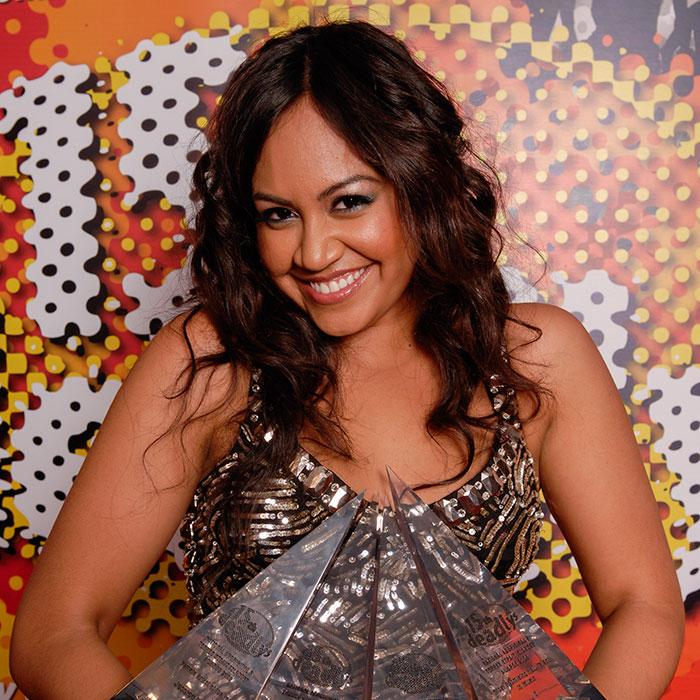
Jessica Mauboy is a popular R&B artist who was launched into the public arena as a runner-up on Australian Idol in 2006. She subsequently signed a contract with Sony Music and released her debut studio album, Been Waiting, in 2008, with her first number-one single, Burn. The album became the second highest-selling Australian album of 2009 and was certified double platinum. Jessica Mauboy branched out for a starring role in 2010 in the Aboriginal musical Bran Nue Dae and in the 2012 film The Sapphires, which earned her the Australian Academy of Cinema and Television Arts (AACTA) Award for Best Actress in a Supporting Role.
Until the age of 9, Rosalie Kunoth-Monks (1937–2022) lived on remote Utopia Station in the Northern Territory where she learnt the Aboriginal laws of her tribe, the Amatjere (Anmatyerre) people.
In 1953 she was discovered by filmmakers Charles and Elsa Chauvel and won the lead role in Jedda (1955), a film that became an Australian classic.
In the interview, she talks about why making the film was such an uncomfortable experience for her and that the filmmakers credited her as 'Ngarla' Kunoth against her wishes.
Later, Rosalie spent 10 fulfilling years as a nun in a Melbourne convent before leaving to set up the first Aboriginal hostel in Victoria.
She continued to be active in social work and politics and as a campaigner for Aboriginal people.
She was interviewed for Film Australia's Australian Biography series in 1995.
Emily Kame Kngwarreye (approximately 1910–1996) was an Anmatyerre artist and elder. She is one of Australia's most important contemporary artists.
She began painting when she was 79 years old having already worked with sand, ceremonial body painting (Awelye), song, ceremony and batik designs on silk. Over a period of eight years she went on to create more than 3,000 individual paintings. In 2007, Kngwarreye's Earth's Creation became the first work by a female Australian artist and the first Aboriginal artwork to be sold for more than one million dollars.
Although she spent her adult life in Utopia in the Northern Territory, her clan Country was Alhalkere. Her Dreaming and the Law from this Country was the source of her creative work and her knowledge. Whenever she was asked to explain her paintings she would describe her work as 'whole lot', regardless of the style:
Awelye (my Dreaming), Arlatyeye (pencil yam), Arkerrthe (mountain devil lizard), Ntange (grass seed), Tingu (Dreamtime pup), Ankerre (emu), Intekwe (favourite food of emus, a small plant), Atnwerle (green bean), and Kame (yam seed). That’s what I paint, whole lot.
In this clip from the documentary Art + Soul: Dreams and Nightmares, Kngwarreye paints the roots of the kam, or pencil yam. She is named after 'Kam', saying 'I am kam now'. Art curator Hetti Perkins says her batik work shows all the hallmarks of her later work with paint, showing a 'gestural, spontaneous and even accidental freedom of expression'.
Linguist Jenny Green, who knew and worked with Kngwarreye, says that she believed that the painting had helped protect her country from threats such as uranium mining. Green says Kngwarreye 'felt that by exercising this right to make images related to that place, perhaps in the same way as you would sing the songs or do the ceremonies, that was being a good citizen in her country terms – being a good custodian. She thought that one of the reasons that her work was so popular was because it was from that country. She thought that was one of the keys to the extraordinary success that she had.'
Notes by Beth Taylor
Mark Ella is a former star rugby union player who captained the Australian Wallabies team 10 times and represented his country 25 times.
Former Wallabies coach Bob Dwyer claimed that Ella was one of the most all-round accomplished players of the game he had ever seen.
With his brothers Glen (his twin) and Gary, the Ellas were a sensation on the field and all 3 represented Australia at various times.
Mark was particularly skilled in reading the play and offloading the ball at the right moment, and then backing up to continue the attack.
This interview by Aaron Pedersen with Mark Ella is from Who We Are in Sport (2012), courtesy of Bearcage Productions.
In this oral history David Gulpilil talks about his background and his early life. In this excerpt he describes himself as a 'full-blood Australian Aboriginal and I come from nearly about three or four thousand miles up the north of Australia - Northern Territory and I'm a tribal man. I live there. Full-blood. I born there. My family live there - which our forefathers lived many years.' Gulpilil talks about how he was given the European name David at a welfare settlement school. Before that in mission school he'd been given the name Joe.
This oral history was recorded without an interviewer and it's powerful to hear Gulpilil talk about himself in a stream of consciousness without answering an interviewer's questions. In this short extract he seamlessly interweaves different elements - talking about his country, his ancestors, how he got his European name, his dislike of western schooling and his love for his culture. With strength and pride he says 'you got your culture, I got my culture. Anyone got culture. I keep my own culture.'
This is a very engaging recording made relatively early in his career (eight years after his first on-screen role in Walkabout, 1970). His voice is recorded very cleanly which captures the clear and measured use of his words. His voice has a calming quality and you are made to feel that he is speaking directly to you. His powerful storytelling technique is a great example of the strong tradition of oral history in Australian Indigenous culture.
This oral history was broadcast on ABC Radio in Adelaide in 1978.
The cover image for is from 3 Dances Gulpilil, 1978, Film Australia Collection © NFSA.
Notes by Beth Taylor
Filmmaker and photographer Tracey Moffatt is one of Australia's most nationally and internationally successful artists, having held around 100 solo exhibitions of her work in Europe, the United States and Australia.
Her films Nightcries – A Rural Tragedy (1989) and BeDevil (1993) have screened at the Cannes Film Festival and other prominent festivals around the world. In 2017 Moffatt was selected to take part in the Venice Biennale with her exhibition MY HORIZON.
In this clip from the 1988 documentary Boomalli: Five Koori Artists, Moffatt talks about art and politics. We see some of her photographic work and her short experimental film Nice Coloured Girls (Tracey Moffatt, Australia, 1987). Moffatt talks about growing up as 'the only Aboriginal kid in the school photograph' in the suburbs of Brisbane. She says:
In the different mediums I work in, photography and film, I'm basically concerned with contemporary Aboriginal society. Be it people living in a traditional way or living in the cities and ... I'm wanting to depart from a documentary or ethnographic mode. I just feel that nowadays people tune out when they think 'here we go again, another predicable documentary about Aborigines.
Moffatt shows photographs from her recent collaboration with women practising the art of basket weaving in Arnhem Land. She says the future for herself and other Aboriginal artists is 'brilliant, especially for those who don't expect the world to come to them, simply because they're Aboriginal and it's owed to them'.
Moffatt defends her right to mix art and politics and talks about her opposition to flying the Aboriginal flag on First Fleet reenactment ships. Moffatt was in Portsmouth, England with an Aboriginal arts festival at the time the ships were setting forth to sail to Australia. We see news footage of her talking to media while she is being arrested by English police.
Excerpt from Boomalli: Five Koori Artists, 1988 – Film Australia Collection.
Notes by Beth Taylor
A proud Yankunytjatjara woman,Dr Lowitja O'Donoghue AC CBE DSG (1932–2024) was born in remote north-western South Australia (APY Lands).
She was removed from her mother at age two, and would not see her again for another 33 years.
After a long struggle to win admission to a training hospital, Lois became the first Aboriginal nurse in South Australia.
In 1976, she was the first Aboriginal woman to be awarded an Order of Australia. In 1983 she was honoured with a CBE and in 1984 she was made Australian of the Year.
In 1990 she became the founding chairperson of the Aboriginal and Torres Strait Islander Commission. Two years later, she was the first Aboriginal person to address the United Nations General Assembly in New York, when she attended the launch of the International Year for the World’s Indigenous People.
She was interviewed for Film Australia's Australian Biography series in 1994. Read a transcript of the complete interview.
Among her many other achievements and honours, Dr O'Donoghue was named Australian of the Year (1984), Australian National Living Treasure (1998) and received the NAIDOC Lifetime Achievement Award (2009).
The Lowitja Institute, a national Aboriginal and Torres Strait Islander community-controlled health research institute, was named in her honour.
Northern Territory Art Gallery Curator Franchesca Cubillo talks about the life of acclaimed Arrente artist Albert Namatjira (1902–59) and his citizenship granted in 1957.
This clip comes from a 2007 Talkback Classroom forum on ‘Indigenous representation’. The students participating were NT Year 12 students Brendon Kassman, Danielle Lede and Esmeralda Stephenson from Casuarina Senior College, Darwin.
The learning journey involved students exploring the collection of Aboriginal art and material culture at the Museum and Art Gallery of the Northern Territory in Darwin and interviewing senior curator Franchesca Cubillo.
Talkback Classroom was a forum program run by the Education section of the National Museum of Australia. At each forum a panel of three secondary students, selected from schools Australia wide, interviewed a leading decision-maker. They also participated in a ‘learning journey’, researching the issue being explored by the forum and interviewing relevant people in the community.
This project was developed in partnership with the National Museum of Australia.
Born on Ukerebagh Island in northern NSW, Neville Bonner (1922–1999) started his working life as a ringbarker, canecutter and stockman.
He spent 16 years on the repressive Palm Island Aboriginal Reserve where he learned many of the skills that would help him later as a politician.
Bonner became the first Aboriginal person in Federal Parliament, representing Queensland as a Liberal Party Senator from 1971 to 1983.
Kyah Simon is an international professional soccer player and one of the most decorated players in Australian football.
She was only 16 when she first represented Australia in 2007 and has gone on to play for her country 92 times including at the 2016 Olympics in Rio de Janeiro.
She was the first Indigenous Australian to score a goal in the Women’s FIFA World Cup in 2011, scoring both the team’s goals in a 2-1 win over Norway.
She scored the winning penalty for Australia to win the 2010 Asian Cup against North Korea.
In 2016 she founded the Kyah Simon Football Clinics for aspiring female football players aged 8 to 18.
In 2020, Kyah started playing for PSV Eindhoven in the Netherlands.
This interview by Aaron Pedersen with Kyah Simon is from Who We Are in Sport (2012), courtesy of Bearcage Productions.
Bundjalung man Anthony Mundine excelled in 2 sports, boxing and rugby league, and was known by his nicknames, ‘The Man’ and ‘Choc’.
Throughout the 1990s he played for several NRL (National Rugby League) clubs and appeared in several grand finals. When he left rugby league during the 2000 season to take up boxing he was the highest-paid player in NRL.
Trained by his father, Mundine won 48 boxing matches out of 59 fights, 11 by knockout. He held the WBA (World Boxing Association) super-middleweight title twice, the IBO (International Boxing Organisation) middleweight title and the WBA interim super-welterweight title in a career spanning 21 years.
Always a colourful character, he was often in the news for his outspoken and sometimes controversial statements.
This interview by Aaron Pedersen with Anthony Mundine is from Who We Are in Sport (2012), courtesy of Bearcage Productions.
In 2019 the NFSA hosted a screening of Douglas Watkin’s insightful documentary Ella, about the first Indigenous dancer with the Australian Ballet – Wiradjuri woman, Ella Havelka.
Following the screening Douglas was joined on stage in a conversation with Ella Havelka, hosted by NFSA Program Manager Karina Libbey.
Des Abbott made his debut for the Australian men’s hockey team in 2007 and was the first Indigenous player to represent Australia at the Olympic Games in men's field hockey.
He was a member of the team when it won the Hockey Champions trophy in 2008, 2009 and 2010; the gold medal at the 2010 Commonwealth Games and the 2010 World Cup; and bronze at the 2008 Summer Olympics in Beijing, where he became the team's joint leading scorer of the tournament.
In addition to playing in the domestic league, he also played professional hockey in the Netherlands.
In 2013, after 111 appearances for the Kookaburras, Abbott announced his retirement.
This interview by Aaron Pedersen with Des Abbott is from Who We Are in Sport (2012), courtesy of Bearcage Productions.
The life of Ruby Langford Ginibi (1934–2011) is a story of triumph against the odds.
She was born on a mission station in Coraki, NSW, and her mother left the family when Langford was six years old.
At the age of 16 she embarked on the first of 4 tumultuous relationships and went on to raise 9 children, working as a fencer, cleaner and machinist.
Three of her children died, and one son has spent almost half his life in correctional institutions.
In 1984, after overcoming an alcohol addiction, Langford wrote her autobiography Don't Take Your Love to Town, which won the 1988 Human Rights Literary Award.
Read a transcript of the complete interview.
In this excerpt from Art + Soul Episode 3: Bitter and Sweet, Mervyn Bishop talks about his most famous photograph – Prime Minister Gough Whitlam symbolically pouring sand into the hand of traditional landowner Vincent Lingiari in 1975.
The episode is narrated by Hetti Perkins and was directed by Warwick Thornton.
Mervyn Bishop: The Exhibition was on display at the NFSA in Canberra from 5 March to 4 October 2021.
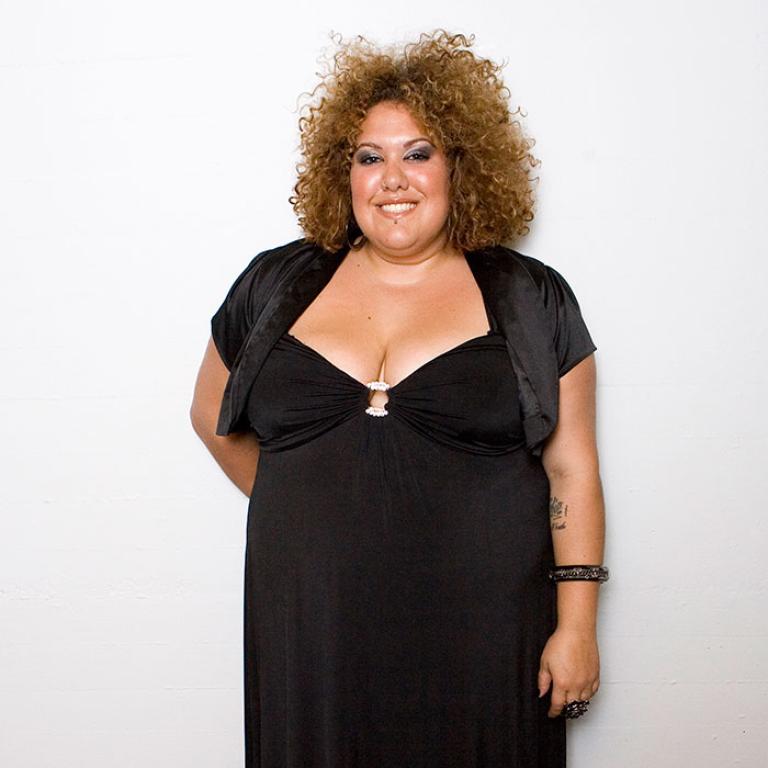
Casey Donovan was the youngest and first female winner of Australian Idol, winning the second season at the age of 16.
Donovan is a multi-award winner and nominee, including an ARIA No 1 Award for Listen with Your Heart and Deadly Awards for Best Album, Best Single and Most Promising New Talent.
After the hype of Australian Idol died down, Donovan re-established herself as a solo independent artist, and as one of Australia’s most promising First Nations entertainers.
She has since starred in the concept show Women of Soul, the stage production of The Sapphires in 2010, and The Mamas and the Papas stage musical in 2011 as Mama Cass.
Christine Anu’s, Island Home was released in 1995, as the second single from her debut studio album, Stylin' Up. It is a cover of a track written by Neil Murray, and originally released by the Warumpi Band as a single from their album Go Bush in 1987.
Anu’s version made some changes to the lyrics; rather than moving to the desert, she compares island life to the city life, and tells the story from a female perspective.
The work won Song of the Year at the 1995 Australasian Performing Right Association (APRA) Awards, and was listed in APRA’s Top 30 Australian songs of all time in 2001.
M Yunupingu receives the Australian of the Year award from Prime Minister Paul Keating.
In July 2019 the NFSA hosted a screening of director Ian Darling’s documentary The Final Quarter, about the events that provoked heated public debate and the retirement of champion AFL player Adam Goodes.
Following the screening, the ABC’s Fran Kelly talked with Darling, ex-footballer Michael O’Loughlin and AFL Inclusion and Social Policy Manager Tanya Hosch about the film, Adam Goodes and racism in sport.
You can listen to the full panel discussion here.
Wattie Creek entered Australian folklore as the birthplace of the Aboriginal land-rights movement when Prime Minister Gough Whitlam visited the Gurindji people to grant them deeds to their land.
The Gurindji rose to national prominence in 1966 when, led by stockman Vincent Lingiari, 200 Aboriginal employees quit slave-labour conditions at Wave Hill cattle station and walked the now National Heritage-listed Wave Hill Walk-off Route to set up a community at Wattie Creek, which they renamed Daguragu.
The walk-off began a nine-year labour strike that ended with a win for Indigenous land rights.
Did you know:
- The Gurindji strike in 1966 led to a nine-year battle to reclaim traditional land.
- On 15 August 1975 the Gurindji became the first Aboriginal community to have land returned to them by the Commonwealth Government.
- The well-known song first recorded in 1991 by Paul Kelly and Kev Carmody, 'From Little Things Big Things Grow', tells the story of the Gurindji’s fight for land rights.
Australia's Heritage: National Treasures with Chris Taylor is also available for purchase from the NFSA Online Shop.
More to explore
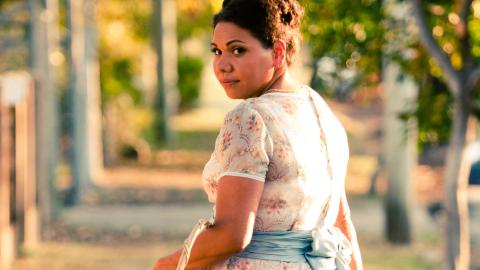
Deborah Mailman Collection
Celebrating the stellar career of AACTA, AFI, Deadly and Logie award-winning actor Deborah Mailman.
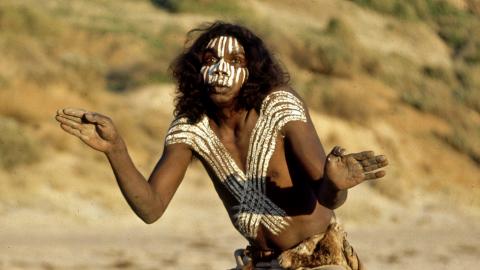
David Gulpilil AM
David Gulpilil AM has forever changed the way Australian film represents Indigenous people and their cultural heritage.
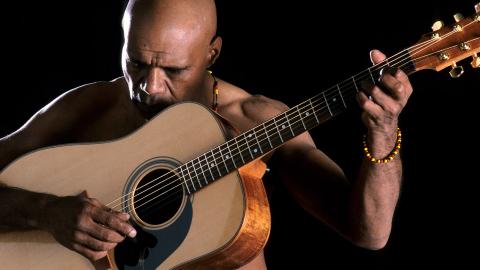
First Nations Sounds of Australia
This collection features sound recordings with cultural, historical and aesthetic significance that are by or about First Nations Australians.
The National Film and Sound Archive of Australia acknowledges Australia’s Aboriginal and Torres Strait Islander peoples as the Traditional Custodians of the land on which we work and live and gives respect to their Elders both past and present.